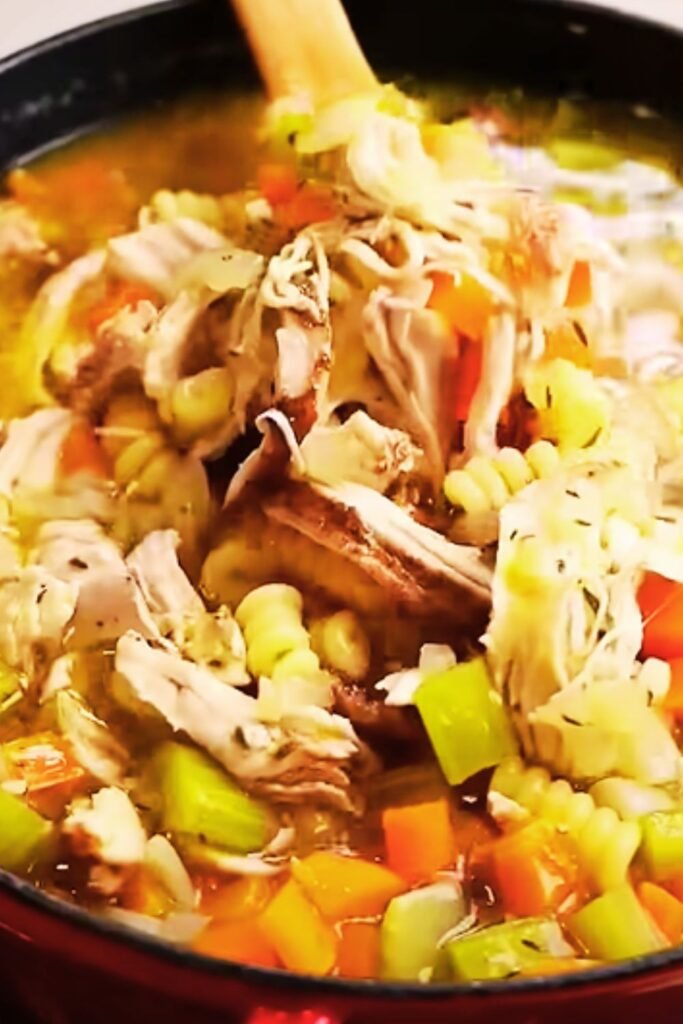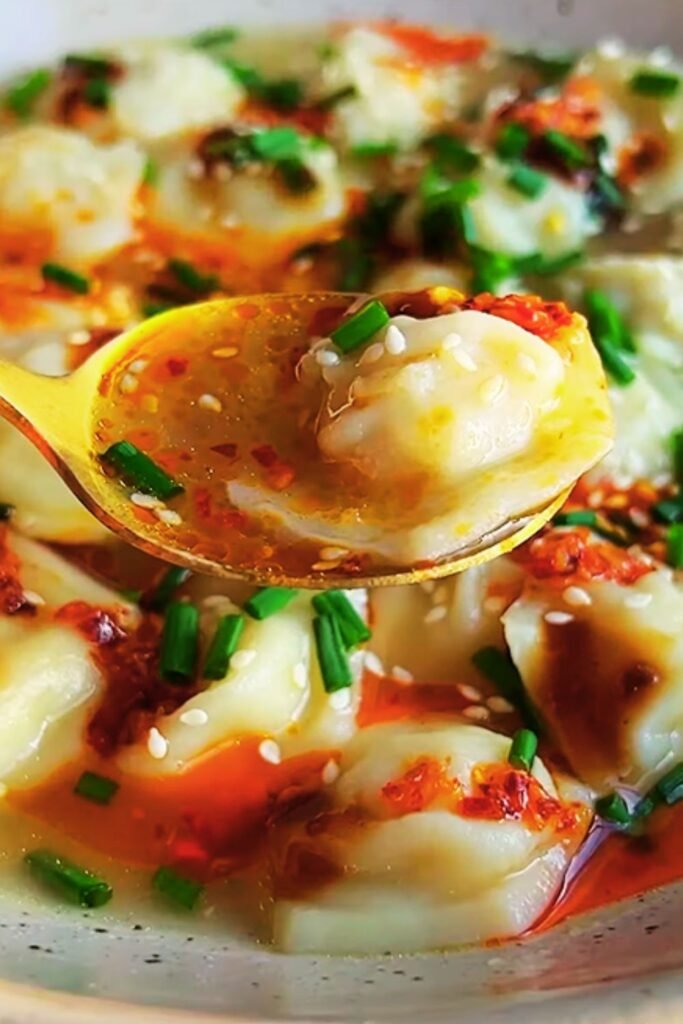There’s something magical about the aroma of freshly baked cinnamon rolls wafting through the kitchen on a weekend morning. Now, imagine that same heavenly scent enhanced with the bright, tart sweetness of fresh raspberries. That’s exactly what you’ll experience with these incredible raspberry cinnamon rolls that I’ve perfected over countless weekend mornings.
I remember the first time I decided to add raspberries to my traditional cinnamon roll recipe. It was a spontaneous decision driven by a basket of beautiful, ruby-red raspberries I’d picked up at the farmer’s market. The result was nothing short of spectacular – the tartness of the berries perfectly balanced the sweet, warm spices, creating a breakfast treat that’s become a family favorite and a showstopper at every gathering.
What Makes Raspberry Cinnamon Rolls Special
Raspberry Cinnamon Rolls are an elevated version of the classic breakfast pastry that combines the warm, comforting flavors of cinnamon and sugar with the bright, tangy burst of fresh or frozen raspberries. Unlike traditional cinnamon rolls, these incorporate fruit directly into the filling, creating pockets of jammy sweetness that complement the spiced sugar mixture perfectly.
The beauty of this recipe lies in its versatility. Whether you’re hosting a special brunch, celebrating a holiday morning, or simply want to treat your family to something extraordinary, these rolls deliver on both flavor and presentation. The vibrant red berries create beautiful color contrast against the golden, pillowy dough, making each roll as visually appealing as it is delicious.
Essential Ingredients Breakdown
Understanding each ingredient’s role helps you achieve the perfect texture and flavor balance. Here’s what you’ll need:
For the Dough:
- All-purpose flour (4 cups): Forms the structure of your rolls
- Warm milk (1 cup): Activates yeast and creates tender crumb
- Active dry yeast (2¼ teaspoons): Provides the rise and airy texture
- Granulated sugar (¼ cup): Feeds the yeast and adds sweetness
- Unsalted butter (¼ cup, melted): Creates richness and tender texture
- Large egg (1): Adds structure and richness
- Salt (1 teaspoon): Enhances flavor and strengthens dough
For the Filling:
- Fresh raspberries (1½ cups): The star ingredient providing tartness
- Light brown sugar (¾ cup): Adds molasses notes and caramelizes beautifully
- Ground cinnamon (2 tablespoons): Provides warmth and classic flavor
- Unsalted butter (4 tablespoons, softened): Creates spreadable base
- Cornstarch (1 tablespoon): Helps thicken raspberry juices
For the Glaze:
- Powdered sugar (1½ cups): Creates smooth, sweet coating
- Cream cheese (4 oz, softened): Adds tangy richness
- Vanilla extract (1 teaspoon): Enhances overall flavor
- Milk (2-3 tablespoons): Adjusts consistency

Detailed Preparation Method
Step 1: Preparing the Dough
I always start by warming my milk to about 110°F – it should feel like a comfortable bath temperature. Too hot, and you’ll kill the yeast; too cool, and it won’t activate properly. In a large mixing bowl, I combine the warm milk with sugar and yeast, then let it sit for about 5 minutes until it becomes foamy and fragrant.
Once the yeast mixture is ready, I add the melted butter, egg, and salt, whisking everything together until well combined. Gradually, I incorporate the flour, one cup at a time, mixing with a wooden spoon until a shaggy dough forms. The dough will seem sticky at first – this is normal and actually desired for soft, tender rolls.
Step 2: Kneading and First Rise
Transfer the dough to a lightly floured surface and knead for about 8-10 minutes until it becomes smooth and elastic. I like to use the heel of my hand to push the dough away from me, then fold it back over itself, rotating a quarter turn each time. You’ll know it’s ready when the dough springs back when gently poked.
Place the kneaded dough in a greased bowl, cover with a damp kitchen towel, and let it rise in a warm, draft-free area for about 1 hour, or until doubled in size. I often place mine in a slightly warmed oven (turned off) to create the perfect environment.
Step 3: Preparing the Raspberry Filling
While the dough rises, I prepare my raspberry filling. In a medium bowl, I gently toss the raspberries with cornstarch – this helps absorb the juices that will release during baking, preventing soggy bottoms. In a separate bowl, I mix the brown sugar and cinnamon until well combined.
The key to perfect raspberry cinnamon rolls is using berries that aren’t overly ripe. I prefer ones that still have a bit of firmness, as they’ll hold their shape better during rolling and baking.
Step 4: Rolling and Filling
Once the dough has doubled, I punch it down gently to release excess air and turn it onto a lightly floured surface. Using a rolling pin, I roll it into a rectangle measuring approximately 12×18 inches. The dough should be about ¼ inch thick – not too thin that it tears, but not so thick that the rolls become dense.
I spread the softened butter evenly across the surface, leaving about a ½-inch border on all sides. Then I sprinkle the cinnamon-sugar mixture evenly over the butter, followed by the cornstarch-coated raspberries. The berries should be distributed fairly evenly, but don’t worry about perfection – rustic charm is part of the appeal.

Step 5: Rolling and Cutting
Starting from the long side, I carefully roll the dough into a tight log, being gentle to avoid crushing the raspberries. Once rolled, I use a sharp knife or dental floss to cut the log into 12 equal pieces. The dental floss method works particularly well here – slide it under the log, cross the ends over the top, and pull to cut cleanly through without compressing the roll.
Baking Instructions and Temperature Guide
| Baking Stage | Temperature | Time | Visual Cues |
|---|---|---|---|
| Preheating | 350°F (175°C) | 15 minutes | Oven fully heated |
| Initial Bake | 350°F (175°C) | 25-30 minutes | Golden brown tops |
| Cooling | Room temperature | 10 minutes | Set but still warm |
| Glazing | Room temperature | 5 minutes | Glaze sets slightly |
Place the cut rolls in a greased 9×13 inch baking dish, leaving small gaps between each roll for expansion. Cover with a kitchen towel and let them rise for another 30 minutes until puffy. This second rise is crucial for achieving light, fluffy rolls.
Bake in the preheated oven for 25-30 minutes, or until the tops are golden brown and the internal temperature reaches 190°F. The raspberries will have released their juices, creating beautiful ruby streaks throughout the rolls.
Creating the Perfect Cream Cheese Glaze
While the rolls cool slightly, I prepare the glaze. In a medium bowl, I beat the softened cream cheese until smooth and fluffy. Gradually, I add the powdered sugar, vanilla, and enough milk to achieve a pourable but not too thin consistency. The glaze should coat the back of a spoon but still drip easily.
I prefer to apply the glaze while the rolls are still slightly warm – this helps it seep into the crevices and creates that perfect balance of sweet and tangy flavors that make these rolls irresistible.
Nutritional Information and Serving Details
| Nutrient | Per Roll | Daily Value % |
|---|---|---|
| Calories | 385 | 19% |
| Total Fat | 12g | 15% |
| Saturated Fat | 7g | 35% |
| Cholesterol | 45mg | 15% |
| Sodium | 220mg | 10% |
| Total Carbs | 65g | 24% |
| Dietary Fiber | 3g | 11% |
| Sugars | 35g | – |
| Protein | 7g | 14% |
| Vitamin C | 8mg | 9% |
Based on a recipe yielding 12 rolls
Storage and Make-Ahead Tips
These raspberry cinnamon rolls are best enjoyed fresh from the oven, but I understand that timing isn’t always perfect. For storage, I cover them tightly with plastic wrap and keep them at room temperature for up to 2 days. They can also be refrigerated for up to a week.
For make-ahead convenience, I often prepare the rolls through the cutting stage, then cover and refrigerate them overnight. In the morning, I let them come to room temperature and rise for about 45 minutes before baking. This method actually improves the flavor as the dough develops more complex tastes overnight.
You can also freeze the unbaked rolls for up to 3 months. Thaw them in the refrigerator overnight, then proceed with the final rise and baking as directed.

Troubleshooting Common Issues
Dense, Heavy Rolls: Usually caused by too much flour or over-kneading. Measure flour by spooning it into the cup and leveling off, rather than scooping directly from the bag.
Soggy Bottoms: This often happens when raspberries release too much juice. Make sure to toss them with cornstarch and avoid using overripe berries.
Uneven Rising: Ensure your kitchen is warm enough (75-80°F is ideal) and free from drafts. Cold environments significantly slow yeast activity.
Glaze Too Thick or Thin: Adjust consistency with additional milk (to thin) or powdered sugar (to thicken). The glaze should coat the rolls without running off completely.
Seasonal Variations and Adaptations
While raspberries are the star of this recipe, I love experimenting with seasonal variations. In summer, I might substitute fresh blackberries or a mix of berries. During fall, I’ve had great success with diced apples and a touch of apple cider vinegar for tang.
For those avoiding dairy, you can substitute the milk with non-dairy alternatives like oat or almond milk, and use vegan butter substitutes. The results are still delicious, though the texture may be slightly different.
Perfect Serving Suggestions
I love serving these raspberry cinnamon rolls as the centerpiece of a weekend brunch spread. They pair beautifully with:
- Fresh fruit salad with seasonal berries and mint
- Thick-cut bacon or turkey sausage for savory balance
- Freshly brewed coffee or Earl Grey tea
- Greek yogurt drizzled with honey
- Scrambled eggs with fresh herbs
For special occasions, I sometimes serve them with a dollop of whipped cream or a scoop of vanilla ice cream for an extra indulgent dessert-like experience.
The Science Behind Perfect Cinnamon Rolls
Understanding the science helps achieve consistent results. The yeast creates carbon dioxide bubbles that make the dough rise, while the proteins in flour form gluten networks that trap these bubbles. The sugar not only sweetens but also feeds the yeast and helps create the golden-brown color through caramelization.
The raspberries add natural pectin, which helps thicken the fruit juices as they cook. This is why the cornstarch is so important – it works with the natural pectin to prevent the rolls from becoming soggy while maintaining that beautiful, jammy texture.
Final Thoughts and Personal Tips
After making these rolls countless times, I’ve learned that patience is key. Don’t rush the rising process – good things take time, and the flavor development during those rises is crucial. I also recommend having all your ingredients at room temperature before starting, as this helps everything combine more easily and promotes even rising.
The most important tip I can share is to trust the process. Even if the dough seems a bit sticky or the raspberries appear to be releasing too much juice, have faith. The end result is always worth the effort, and the smiles on your family’s faces when they bite into these heavenly rolls make every minute of preparation worthwhile.
These raspberry cinnamon rolls have become more than just a recipe in my kitchen – they’re a way to show love, create memories, and start the day with something truly special. Whether you’re making them for a holiday morning, a weekend treat, or just because, I know they’ll bring the same joy to your table that they’ve brought to mine.
Questions & Answers
Q: Can I use frozen raspberries instead of fresh ones? A: Yes, you can use frozen raspberries, but don’t thaw them first. Toss them directly with the cornstarch while still frozen to prevent excess moisture. They may break down slightly more during baking, but the flavor will still be excellent.
Q: How do I know when my dough has risen enough? A: The dough should double in size and feel light and airy. You can test it by gently poking it with your finger – if the indentation springs back slowly, it’s ready. If it springs back immediately, give it more time.
Q: Can I make these rolls without a stand mixer? A: Absolutely! I actually prefer making them by hand. The key is to be patient during the kneading process and to add flour gradually to avoid overworking the dough.
Q: What’s the best way to reheat leftover rolls? A: I recommend wrapping them in foil and warming them in a 350°F oven for about 10 minutes. You can also microwave individual rolls for 20-30 seconds, but the oven method maintains better texture.
Q: Can I prepare the dough the night before? A: Yes! After the first rise, punch down the dough, wrap it tightly in plastic wrap, and refrigerate overnight. The next morning, let it come to room temperature for about 30 minutes before rolling out.
Q: Why do my rolls sometimes end up lopsided? A: This usually happens when the dough isn’t rolled evenly or when the filling isn’t distributed uniformly. Take your time rolling the dough to an even thickness and spread the filling all the way to the edges.
Q: Can I reduce the sugar in this recipe? A: You can reduce the sugar in the filling by up to 25% without significantly affecting the texture, though the rolls will be less sweet. I don’t recommend reducing the sugar in the dough itself, as it’s needed for proper yeast activity.
Q: What should I do if my glaze is too thin? A: Add more powdered sugar, one tablespoon at a time, until you reach the desired consistency. If it’s too thick, add milk one teaspoon at a time until it reaches the right consistency for drizzling.